.avif)

Ant Exterminator in Diboll, TX
Ant extermination in Diboll, TX by Spot On Pest Control, LLC includes full inspection, baiting, & outdoor perimeter sprays. Get lasting ant control—call us.

Ant Exterminator in Diboll, TX
Ant problems in Diboll, TX are common year round because the East Texas climate is warm and humid and homes sit near wooded areas. An effective ant extermination plan begins with a professional inspection and species identification, then applies targeted treatments, interior nest control when needed, and practical prevention steps tailored to Diboll homes. Below is a clear, expert overview of how ant control works, what to expect, and how to reduce the chance of future infestations.
Common ant species and signs in Diboll, TX
Knowing the species is essential because treatments differ by ant biology and behavior. Common species in the Diboll area include:
- Red imported fire ants (Solenopsis invicta) — visible mounds, aggressive stingers, workers 1/8 to 1/4 inch long, reddish color.
- Carpenter ants (Camponotus spp.) — larger ants, dark-colored, often associated with moist or decayed wood and nearby pine forests.
- Odorous house ants — small, dark ants that produce a rotten coconut smell when crushed and form long indoor trails.
- Argentine ants and pavement ants — form large foraging trails and can invade kitchens and pantries.
.avif)
Typical signs of infestation:
- Active ant trails along foundation lines, windows, or kitchen counters.
- Mounds or satellite nests in lawns and mulched beds.
- Small piles of sawdust or rustling noises in walls for carpenter ants.
- Multiple indoor sightings concentrated around kitchens, bathrooms, or pet food areas.
Professional inspection and species identification
A thorough inspection is the foundation of effective control. Typical inspection steps include:
- Exterior perimeter survey: check foundation, eaves, vents, windows, landscaping, mulch, and fire ant mounds.
- Interior assessment: trace ant trails to entry points, inspect behind appliances, cabinets, plumbing penetrations, and wall voids.
- Habitat evaluation: identify moisture problems, wood-to-soil contact, and landscaping features that harbor ants.
- Species identification: determine behavior (foraging vs nesting indoors) to select bait type and placement.
Accurate ID guides the strategy: baits for foragers, perimeter residuals for exclusion, and nest-targeted treatments for colonies.
Treatment strategies: baits and perimeter treatments
Effective programs use a combination of baiting and perimeter treatments based on species and infestation severity.
Baits
- How baits work: Slow-acting baits allow foraging workers to carry toxicant back to the colony where it is shared, eventually killing the queen and reducing the colony.
- Placement: Indoors, small amounts are placed along trails, behind appliances, and in pantry areas. Outdoors, granular or gel baits are placed near entry points, under landscape borders, or near active mounds.
- Expectations: Baits often show reduced activity in 3 to 10 days but may take longer for complete colony elimination.
Perimeter treatments
- Objective: Create a residual barrier around the structure to prevent foraging ants from entering.
- Methods: Liquid residual sprays, granular perimeter products, or non-repellent formulations that ants cross without detecting, providing better transfer to nest mates.
- When used: Best for continuous pressure against outside foragers, particularly with species that have large outdoor populations like pavement ants or fire ants.
Interior treatments and colony control
Indoor colonies or nests in wall voids require targeted measures.
- Direct nest treatment: Locating and treating the nest with dusts or foam products designed for voids is the fastest way to stop indoor activity.
- Carpenter ant control: For carpenter ants, treatment includes locating galleries, applying residual dusts or foams into voids, and addressing the moisture source or decayed wood that allowed infestation.
- Safety considerations: Professionals choose products and application methods that minimize exposure to occupants and pets while maximizing colony control.
Prevention and sanitation for long-term control
Prevention is critical in Diboll because the local humidity and surrounding vegetation create excellent ant habitat. Key prevention steps for homeowners:
- Seal entry points: caulk cracks in foundation, repair window and door screens, install door sweeps, and seal utility penetrations.
- Manage moisture: fix plumbing leaks, improve grading away from the foundation, maintain gutters and downspouts, and ventilate crawlspaces to reduce damp wood problems.
- Adjust landscaping: keep mulch, pine straw, and heavy vegetation 6 to 12 inches away from siding; avoid wood-to-ground contact and store firewood off the ground.
- Sanitation: store food in sealed containers, clean up spills immediately, keep pet food dishes off the floor or picked up when not in use, and keep garbage in sealed containers.
- Lawn care: reduce fire ant mounds with professional mound treatments and avoid overwatering lawns that encourage ant activity.
Follow-up plans and what homeowners should expect
A dependable follow-up plan ensures long-term control and addresses any re-infestation promptly.
- Typical timeline: Expect initial reduction in visible ants within days from baits and immediate knockdown from perimeter sprays, but full colony elimination can take 1 to 6 weeks depending on species and size of infestation.
- Reinspection: A professional program commonly includes a reinspection within 7 to 14 days to evaluate bait uptake and activity, with additional visits scheduled as needed.
- Seasonal maintenance: Ant pressure increases in spring and summer in East Texas; periodic monitoring and pre-emptive exterior treatments help prevent new colonies from establishing.
- Documentation: Homeowners should receive a treatment summary outlining species identified, areas treated, product types (general category), and recommended prevention steps.
Safety and realistic outcomes
Ant control balances effectiveness with safety. Professionals typically use targeted, low-percentage baits and non-repellent residuals to minimize exposure to people and pets while maximizing ant control. Complete elimination of ant activity often requires addressing structural and landscape factors in addition to chemical treatments. Carpenter ant issues may also require repairs to damaged wood and correction of moisture sources for a permanent solution.
Final notes on ant control in Diboll homes
Ant extermination in Diboll, TX is most successful when it combines accurate species identification, strategic use of baits and perimeter treatments, targeted interior nest control for colonies, and homeowner-focused prevention that accounts for East Texas climate and landscaping. With a clear treatment plan and scheduled follow-ups, long-term control is achievable while minimizing disruption to your home and family.
Ant Exterminator in Diboll, TX With Targeted Long-Term Control
Ants may be small, but infestations can grow fast. Our professional ant exterminator in Diboll, TX eliminates colonies at their source using safe, effective methods. Spot On Pest Control, LLC offers follow-up services and custom prevention plans to stop ants from coming back. Schedule your service now.
Stop Ants For Good With Focused Local Treatment
Our Services
Our pest control services cover ants, termites, bed bugs, rodents, mosquitoes, and other common pests, with customized solutions for both residential and commercial properties.
.png)






